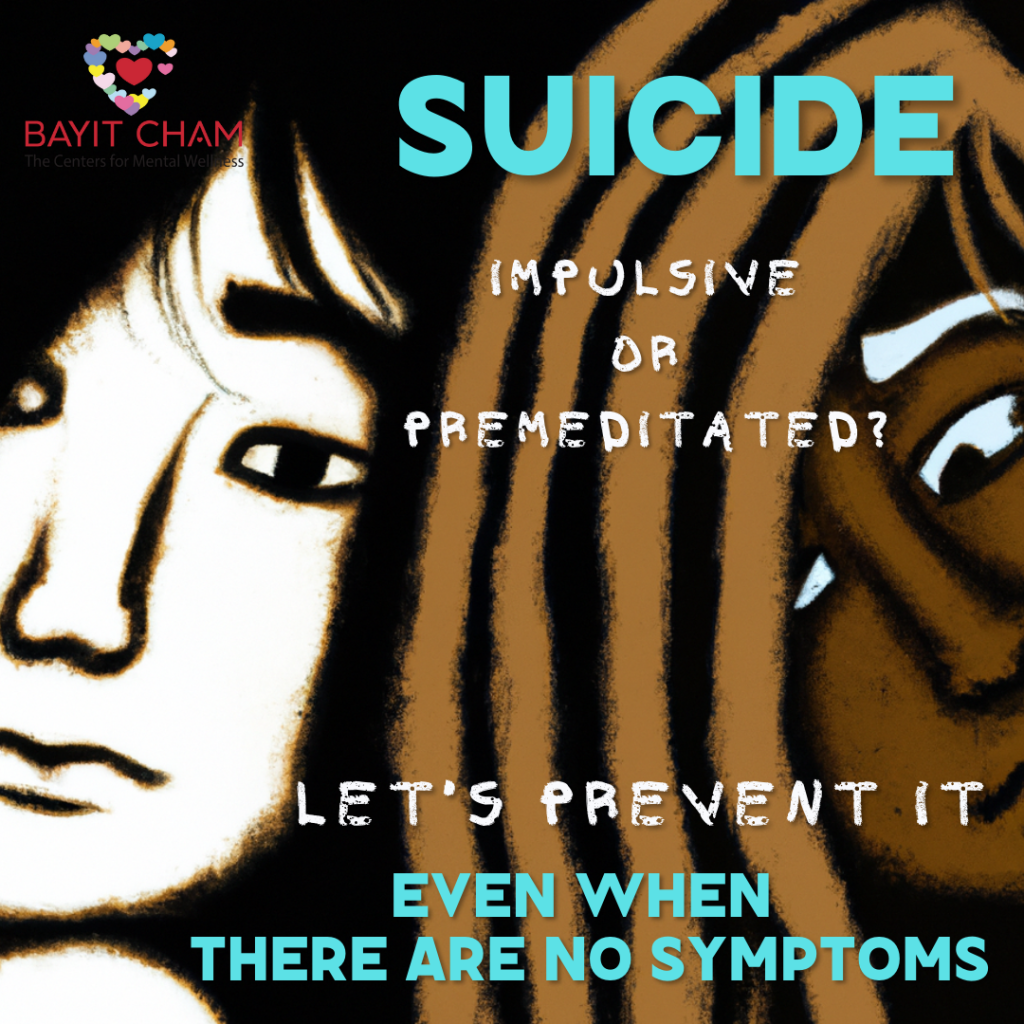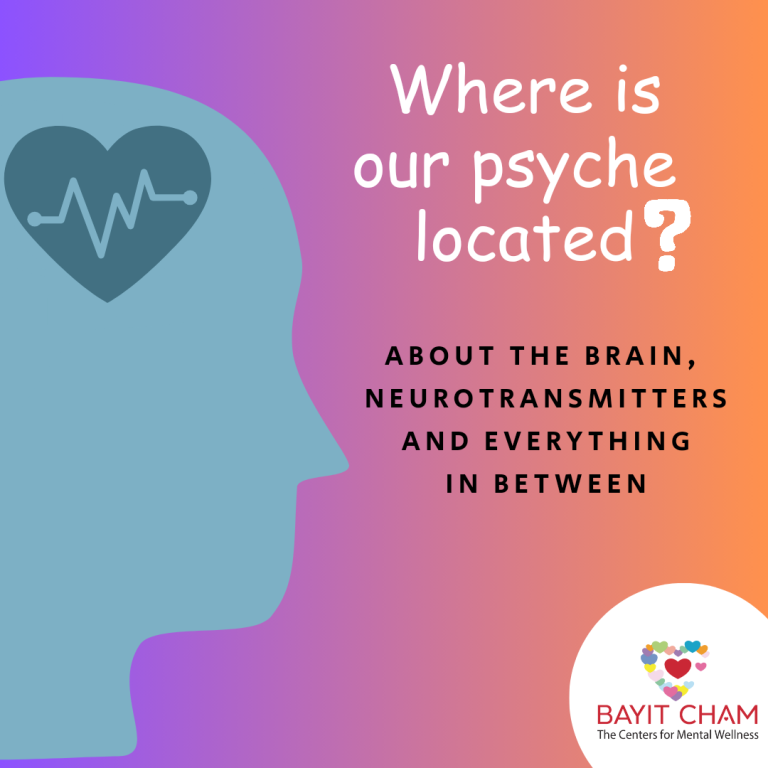Rachel (pseudonym) was in therapy and received extensive support from professionals and family. Despite this, during a period that she seemed to be optimistic and stable, she took her own life.
Shoshi (pseudonym) also attempted suicide, right after an excellent meeting with her rehabilitation worker where she appeared to be and sounded good. Fortunately, she didn’t succeed.
It often seems that there are clear warning signs for suicidal behavior, but there are also cases where suicide occurs without visible signs, and it’s important to raise awareness about these cases too. How?
Professional literature presents two types of suicidality: long-term planning versus impulsivity.
Long-term planning:
In most cases, suicide occurs after a prolonged process of suicidal thoughts and deterioration in mental state. During this period, the person may experience depression, hopelessness, and severe distress. Warning signs often appear, such as talking about death, mood swings, parting with valuable possessions, or social withdrawal.
Impulsive suicidality:
This is a phenomenon where a person decides to commit suicide suddenly, without prior planning. Such a situation can occur in extreme stress, episodes of depression, anger, alcohol or drug use, or in special mental states like PTSD.
Studies indicate that high impulsivity may be a risk factor for sudden suicidal behavior.
In both types of suicidality, there can be a deceptive calm – a confusing sign to watch out for. The transition to calmness and serenity can occur after a person has decided to end their life, which can cause a false sense of “relief”. This change can mislead the surrounding environment and make them think the situation has improved, when in fact danger is approaching.
How can we prevent suicide, both when there are and aren’t warning signs?
Creating a supportive environment open to emotional communication – encouraging people to talk about their feelings and seek help.
Paying attention to small changes even when there are no clear signs. Slight changes in behavior (for better or worse) may indicate distress.
Raising awareness (including among professionals) – recognizing a wide range of signs and encouraging early intervention.
Removing means of harm – especially if there have been previous attempts and the person is in a risk group (such as teenagers and young adults, people with personality disorders, previous suicide attempts, etc.). This can prevent (or at least delay) impulsive suicide.
Making mental health services accessible – facilitating access to these services and reducing stigma. Providing an option for supportive, accessible, and immediate communication channel in times of distress.
Social and community support – strengthening social connections consistently and reinforcing the feeling (in actions and words) that the person is not alone.
In conclusion – don’t be afraid to talk about suicide! It won’t give ideas, it will only reduce distress.
If you’re feeling mental distress or if you know someone in distress, call us at: *9518.





